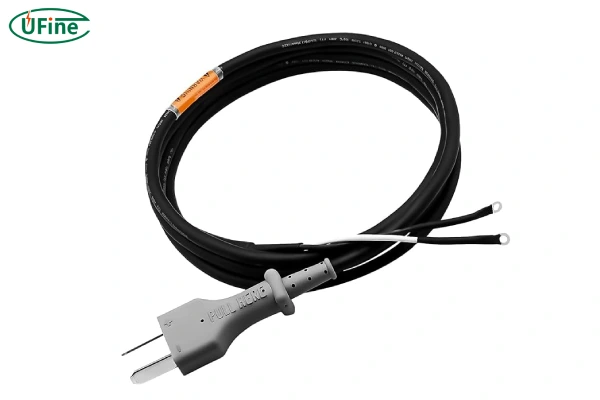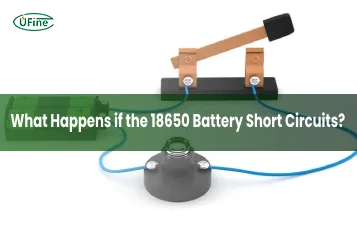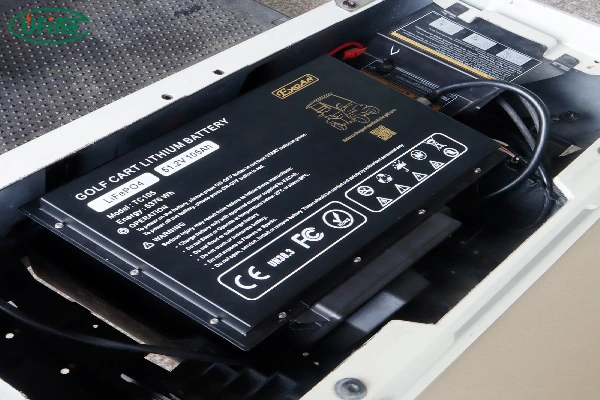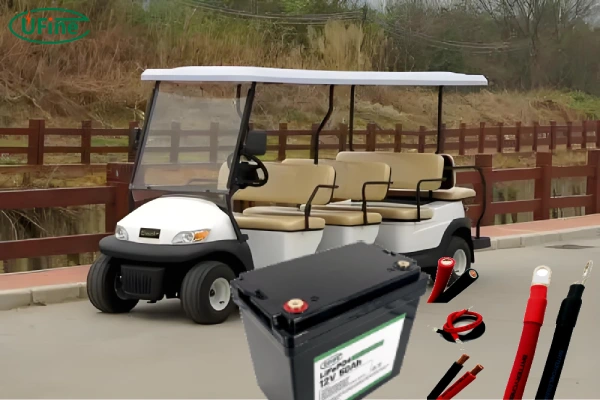This comprehensive guide delves into the world of golf cart battery cables, unraveling their intricacies and providing insights into their importance. We’ll explore different types, key parameters, connection methods, and ultimately, how to choose the right cables for your specific needs. By understanding these vital components, you can ensure your cart runs smoothly, safely, and efficiently.
Part 1. What is golf cart battery cables?

Golf cart battery cables are not just any ordinary wires. They are specially designed to handle the high currents generated by golf cart batteries, which are typically lead-acid batteries with significant power output. These cables are built to withstand the rigors of repeated use, exposure to the elements, and the constant vibration of the cart.
The Guide to Best Lithium Golf Cart Batteries
Part 2. Golf cart battery cable types
The world of golf cart battery cables is not a one-size-fits-all scenario. Different types of cables are available, each with its own characteristics and applications. Understanding these differences is crucial for choosing the right cables for your cart.
-
Standard Golf Cart Battery Cables: These are the most common type of cables, often found in standard golf carts. They are typically made of copper, known for its excellent conductivity, and have a thick, durable insulation layer. This insulation protects the wires from abrasion, moisture, and heat, ensuring long-lasting performance. Standard cables are often chosen for their reliability, affordability, and ability to handle standard power demands.
-
Flex Golf Cart Battery Cables: As the name suggests, these cables are designed for flexibility. They are often used in applications where space is limited, such as in tight compartments or where the cables need to bend frequently. Flex cables are typically made of copper with a thinner insulation layer, allowing for greater flexibility without sacrificing durability. They are ideal for situations where space is at a premium or where frequent movement is required.
-
High-Amp Golf Cart Battery Cables: These cables are designed to handle significantly higher currents than standard cables. They are often used in high-performance golf carts, modified carts with upgraded motors, or carts used for heavy-duty applications, such as towing or carrying heavy loads. High-amp cables typically feature thicker copper conductors and a reinforced insulation layer to handle the increased electrical load. They are essential for ensuring safe and efficient operation in demanding situations.
-
Ultra-Flex Golf Cart Battery Cables: These cables are the most flexible option available, offering exceptional bendability and ease of movement. They are often used in applications where space is extremely limited or where the cables need to be routed through tight corners. Ultra-flex cables are typically made of copper with a very thin insulation layer, sacrificing some durability for maximum flexibility. They are ideal for situations where space is at a premium and where the cables need to be routed through tight, confined areas.
Part 3. Key parameters
When selecting golf cart battery cables, several key parameters must be considered to ensure compatibility with your cart’s electrical system and meet your specific needs.
-
Gauge: The gauge of a cable refers to its thickness, which directly affects its ability to handle current. A thicker gauge cable can handle more current, while a thinner gauge cable is better suited for lower current applications. The gauge is usually expressed in American Wire Gauge (AWG), with lower numbers representing thicker cables. For golf carts, a gauge of 4 or 6 AWG is typically recommended, but the specific gauge may vary depending on the cart’s motor, battery bank, and intended use.
-
Length: The length of the cable is crucial for ensuring proper connection between the batteries and the motor or other electrical components. Measure the distance between the batteries and the motor before purchasing cables to ensure you have enough length for a secure connection. Avoid using cables that are too short, as this can lead to strain on the connections and potential damage. Conversely, using cables that are too long can lead to excessive voltage drop, reducing the efficiency of the electrical system.
-
Insulation: The insulation on the cables is essential for protecting the wires from damage and preventing short circuits. Look for cables with high-quality insulation that is resistant to heat, abrasion, chemicals, and moisture. A durable insulation layer will ensure the cables remain protected from the elements and the rigors of daily use, extending their lifespan and preventing potential electrical hazards.
-
Material: The material used for the conductors within the cables plays a crucial role in their performance. Copper is the most common material for golf cart battery cables due to its excellent conductivity and resistance to corrosion. Aluminum is sometimes used as an alternative due to its lower cost, but it has slightly lower conductivity and is more prone to corrosion. Choose cables made of high-quality copper for optimal performance and longevity.
-
Ampacity: Ampacity refers to the maximum current a cable can safely carry without overheating. The ampacity of a cable is determined by its gauge, insulation, and operating temperature. Choose cables with an ampacity that meets or exceeds the current requirements of your golf cart’s electrical system. Using cables with insufficient ampacity can lead to overheating, damage to the cables, and potential electrical hazards.
Part 4. How to connect golf cart battery cables?
Connecting golf cart battery cables is a relatively straightforward process but requires careful attention to ensure a secure and safe connection. Follow these steps:
-
Disconnect the Battery: Safety is paramount when working with electrical systems. Before connecting or disconnecting any cables, always disconnect the battery. This prevents electrical shock and damage to the components.
-
Identify the Terminals: Identify the positive (+) and negative (-) terminals on the batteries, motor, and other components. The positive terminal is usually marked with a red (+) sign, and the negative terminal is usually marked with a black (-) sign. Incorrect connections can lead to serious damage to the electrical system and potential safety hazards.
-
Connect the Cables: Connect the positive cable from the battery to the positive terminal on the motor or other component. Connect the negative cable from the battery to the negative terminal on the motor or other component. Ensure that the cables are securely connected to the terminals, using cable clamps or terminals as needed.
-
Secure the Connections: Once the cables are connected, ensure they are securely fastened to prevent loose connections that can lead to poor performance or electrical hazards. Use cable clamps or terminals designed for golf cart battery cables to ensure a secure connection.
-
Reconnect the Battery: After ensuring all connections are secure, reconnect the battery. Double-check that all connections are tight and that there are no loose wires.
Part 5. How to choose the right golf cart battery cables?
Choosing the right golf cart battery cables is crucial for ensuring your cart runs smoothly, safely, and efficiently. Here are some key considerations:
-
Cart Type and Usage: Consider the type of golf cart you own and how it is used. If you have a standard golf cart for recreational use, standard cables may suffice. However, if you have a high-performance cart or use it for heavy-duty applications, high-amp cables may be necessary.
-
Battery Bank Size and Voltage: The size and voltage of your battery bank will determine the current requirements of your cart. Larger battery banks with higher voltage will require cables with a higher ampacity.
-
Motor Type and Power: The type and power of your motor will also influence the current requirements of your cart. High-power motors will require cables with a higher ampacity to handle the increased current draw.
-
Environmental Conditions: Consider the environmental conditions where your cart is used. If your cart is exposed to harsh weather conditions, such as extreme temperatures, moisture, or salt spray, choose cables with durable insulation and corrosion-resistant materials.
-
Budget: Golf cart battery cables come in a range of price points, depending on their gauge, length, insulation, and material. Set a budget and choose cables that meet your needs without breaking the bank.
-
Brand Reputation: Choose cables from reputable brands known for quality and reliability. Look for cables with a warranty to ensure you have recourse if any issues arise.
Part 6. Conclusion
Golf cart battery cables, while often overlooked, are essential components that ensure the smooth and safe operation of your cart. By understanding their types, key parameters, connection methods, and how to choose the right cables for your needs, you can keep your cart running smoothly and enjoy years of reliable performance. Remember to prioritize safety by disconnecting the battery before working on any electrical components and to choose high-quality cables from reputable brands.
Related Tags:
More Articles

18650 Battery Short Circuit: Risks and Safety Tips
Discover what happens during a 18650 battery short circuit, warning signs, and how to avoid fire, damage, and hazardous failures in your devices.
LiPo Battery Discharge Rate Guide & Calculation Tips
Understand LiPo battery discharge rates, C-ratings, and how to calculate max current. Essential guide for RC, drones, and electronics users.
High‑Capacity 3S LiPo Batteries: 5000 mAh vs. 10000 mAh
Compare 3S LiPo 5000mAh vs 10000mAh batteries by weight, power, and use. Find the best fit for your drone, RC car, or boat setup.
Top 5 Applications for Small 3S LiPo Batteries
Small 3S LiPo batteries power drones, RC gear, wearables, and robotics with high energy and low weight. Making them ideal for compact electronics projects.
Building and Charging Your Own 3S LiPo Pack: A Step‑by‑Step Guide
Learn how to build, balance, and charge a 3S LiPo battery pack safely at home with this complete DIY guide for hobbyists and beginners.





